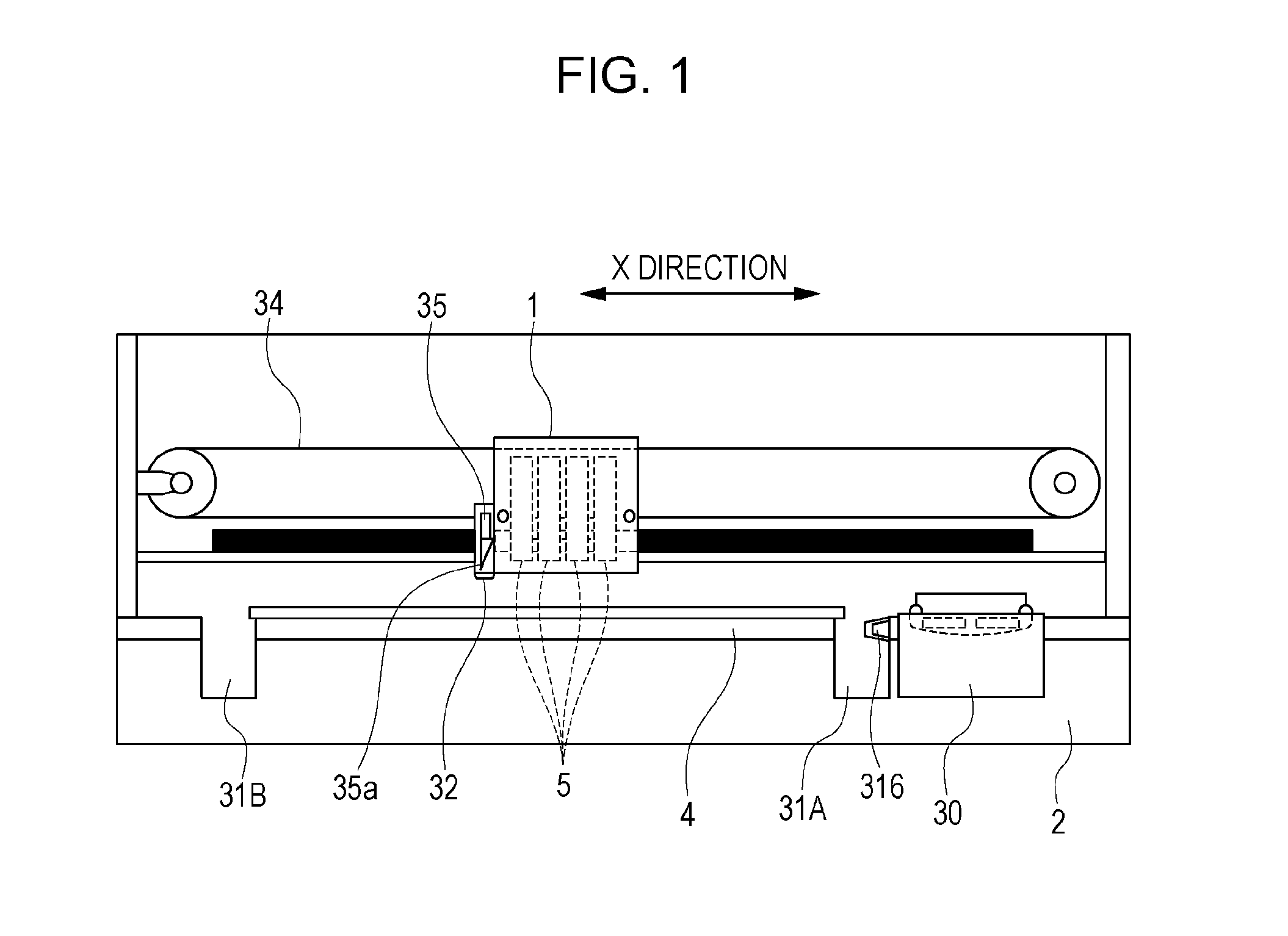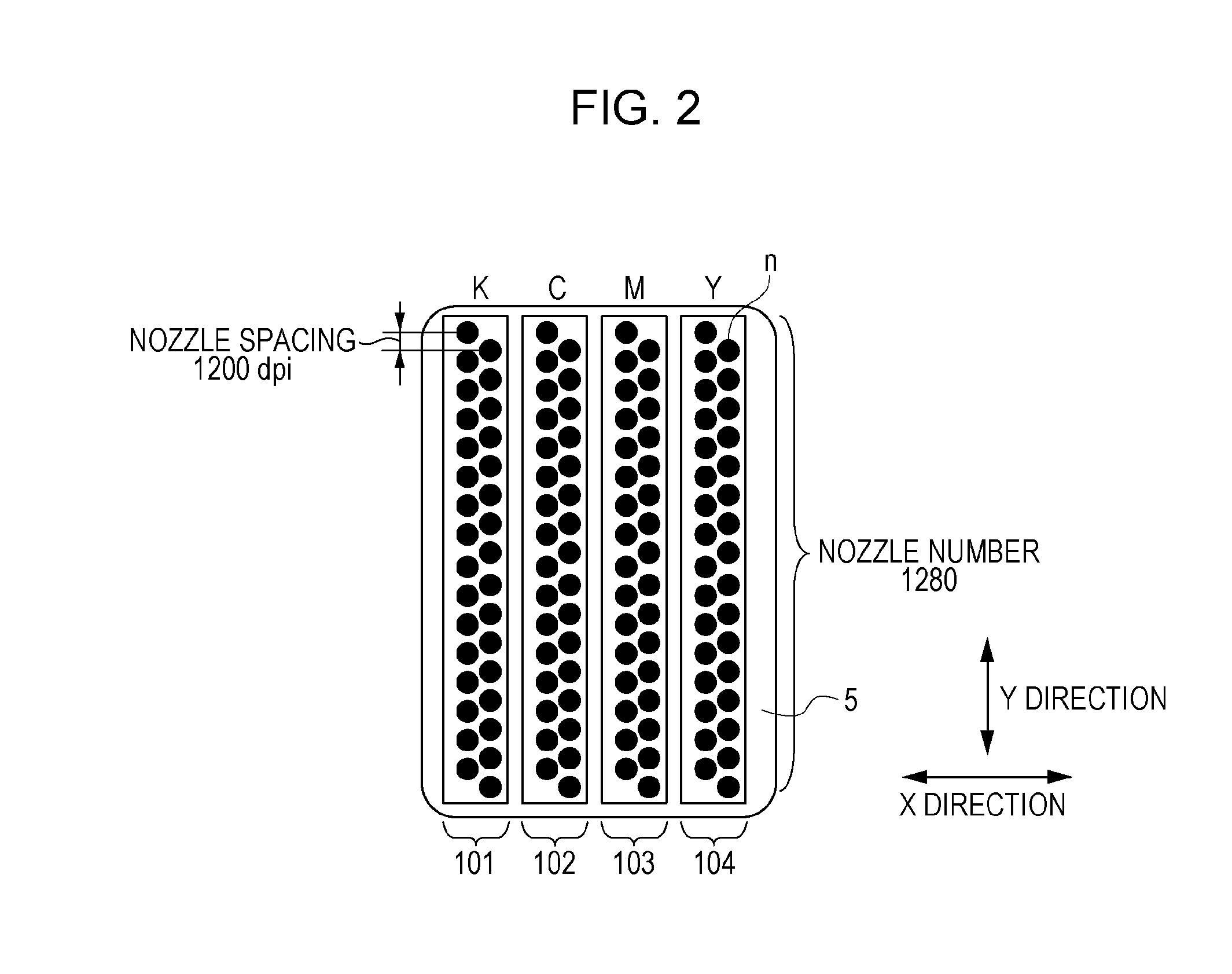Inkjet recording apparatus and inkjet recording method
- Summary
- Abstract
- Description
- Claims
- Application Information
AI Technical Summary
Benefits of technology
Problems solved by technology
Method used
Image
Examples
first embodiment
[0043]According to a first embodiment of the present invention, multi-valued input image data is converted into binary data (record data) indicating whether or not dots should be formed, that is, whether or not ink droplets should be discharged from the recording head 5 based on dot-arrangement pattern data (also referred to as index-pattern data) which will be described later. The above-described binarization is achieved with a host apparatus quantizing image data into data of a relatively low resolution and transferring the quantized multi-valued image data to the main body of the recording apparatus. In the main body of the recording apparatus, the transferred image data is converted into binary data (record data) based on the index-pattern data, and expanded into a buffer.
[0044]FIGS. 4A, 4B, and 4C schematically illustrate processing procedures that are performed in the main body of the recording apparatus from when the multi-valued input data is transferred to when the record d...
second embodiment
[0102]Next, a second embodiment of the present invention will be described. The configurations illustrated in FIGS. 1 to 3 are also used for the second embodiment.
[0103]In the second embodiment, a method of reducing the time-difference unevenness with increased precision in consideration of the time difference occurring in the main-scanning direction (carriage-drive direction) in addition to the time difference between the preceding dotting recording and the following dotting recording will be described. Namely, the recording ratio is set in consideration of the position of each image-data region in the main-scanning direction. In the second embodiment, record data is generated and processed according to the same method as that of the first embodiment.
[0104]FIG. 15 illustrates a record-data processing method used in the second embodiment. A result of determining the time-difference unevenness determination value S for each of pixel data items of input image data of a resolution of 6...
third embodiment
[0114]Next, a third embodiment of the present invention will be described. The configurations illustrated in FIGS. 1 to 3 are also used for the third embodiment. Here, a method different from the recording-direction ratio change determination method illustrated in the first embodiment will be described. As for the rest such as the flow of the recording-data generation, the same processing procedures as those of the first embodiment will be performed.
Recording-Direction Ratio Change Determination Method 2
[0115]In the third embodiment, a recording-direction ratio change determination method 2 performed in consideration of the hue of input data based on input multi-valued data is adopted. Here, the input multi-valued data is provided as 8-bit (0 to 255 levels of gray) RGB data, for example. However, the input multi-valued data may be of any type, so long as the hue can be identified based on the input data.
[0116]FIGS. 20A, 20B, and 20C illustrate the recording-direction ratio change de...
PUM
 Login to View More
Login to View More Abstract
Description
Claims
Application Information
 Login to View More
Login to View More - R&D
- Intellectual Property
- Life Sciences
- Materials
- Tech Scout
- Unparalleled Data Quality
- Higher Quality Content
- 60% Fewer Hallucinations
Browse by: Latest US Patents, China's latest patents, Technical Efficacy Thesaurus, Application Domain, Technology Topic, Popular Technical Reports.
© 2025 PatSnap. All rights reserved.Legal|Privacy policy|Modern Slavery Act Transparency Statement|Sitemap|About US| Contact US: help@patsnap.com



